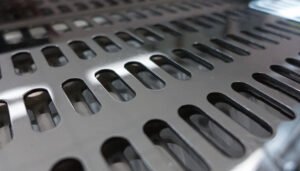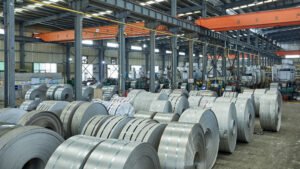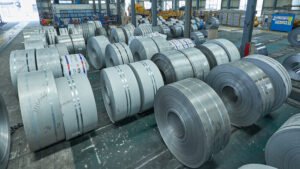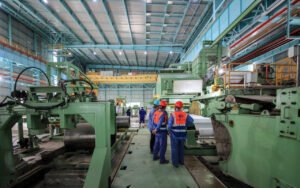Decorative Stainless Steel Sheet for Elevator Panels: Mirror, Etched & PVD Colors

Are you tired of seeing drab, uninspired elevator interiors that detract from your building's overall design? These small spaces are often the first and last impression you make, yet they frequently feature materials that are easily scratched, dated, and dull. It’s time for a solution that blends breathtaking aesthetics with rugged durability.
Decorative stainless steel sheets offer a premium solution for elevator panels, combining materials like Grade 304 or 316 stainless steel with finishes such as high-polish mirror, intricate etching, and vibrant PVD coloring. This synergy creates surfaces that are not only visually stunning but also exceptionally durable and resistant to wear.
As the Global Business Director for MFY, I’ve seen firsthand how the right material choice can transform a purely functional space into a memorable part of the architectural experience. Moving beyond standard finishes is no longer a luxury but a necessity for creating spaces that stand out. The challenge lies in selecting a material that can withstand the rigors of daily use while still delivering a powerful design statement, a balance that decorative stainless steel strikes perfectly.
This is where the true innovation in material science meets architectural vision. The evolution from plain, utilitarian elevators to bespoke vertical transport experiences reflects a broader trend in commercial and residential design. It’s a recognition that every square foot of a building contributes to its identity and the experience of its occupants. In my work with clients across global markets—from bustling manufacturing hubs to luxury construction projects—the conversation has shifted. We're no longer just talking about moving people; we're talking about elevating their experience. This requires a deeper look into the materials that make it possible, weighing not just the initial visual appeal but the entire lifecycle, from installation and maintenance to long-term resilience and timeless style.
What are the aesthetic challenges in designing elevator panels?
Designing an elevator interior presents a unique dilemma: how to create a "wow" factor within a compact, high-traffic box? Architects and designers are constantly battling material limitations, budget constraints, and the conflicting demands of durability versus elegance. Finding a single material that addresses all these challenges is the core problem.
The primary aesthetic challenges in elevator panel design include balancing extreme durability with a high-end look, ensuring the design aligns with the building's overall architectural theme, managing lifecycle costs, and adhering to strict safety codes without compromising on creating a unique and welcoming user experience.
Throughout my career at MFY, I've consulted on numerous projects where the design team was stuck between a rock and a hard place. They might love the look of a natural wood veneer but fear its vulnerability to scratches and moisture in a busy commercial tower. Or they might consider a bold paint color, only to worry about scuffs and chips diminishing the look within months. This constant compromise often leads to safe, uninspired choices that fail to make an impact. The transition to a more robust and versatile material isn't just an upgrade; it's a strategic decision that resolves these fundamental conflicts. We guide our clients to see the elevator not as an afterthought, but as an integral, dynamic element of their design narrative. By understanding the inherent weaknesses of traditional materials, we can better appreciate the innovative solutions that decorative stainless steel brings to the table, turning a challenging design problem into an opportunity for distinction and long-term value.
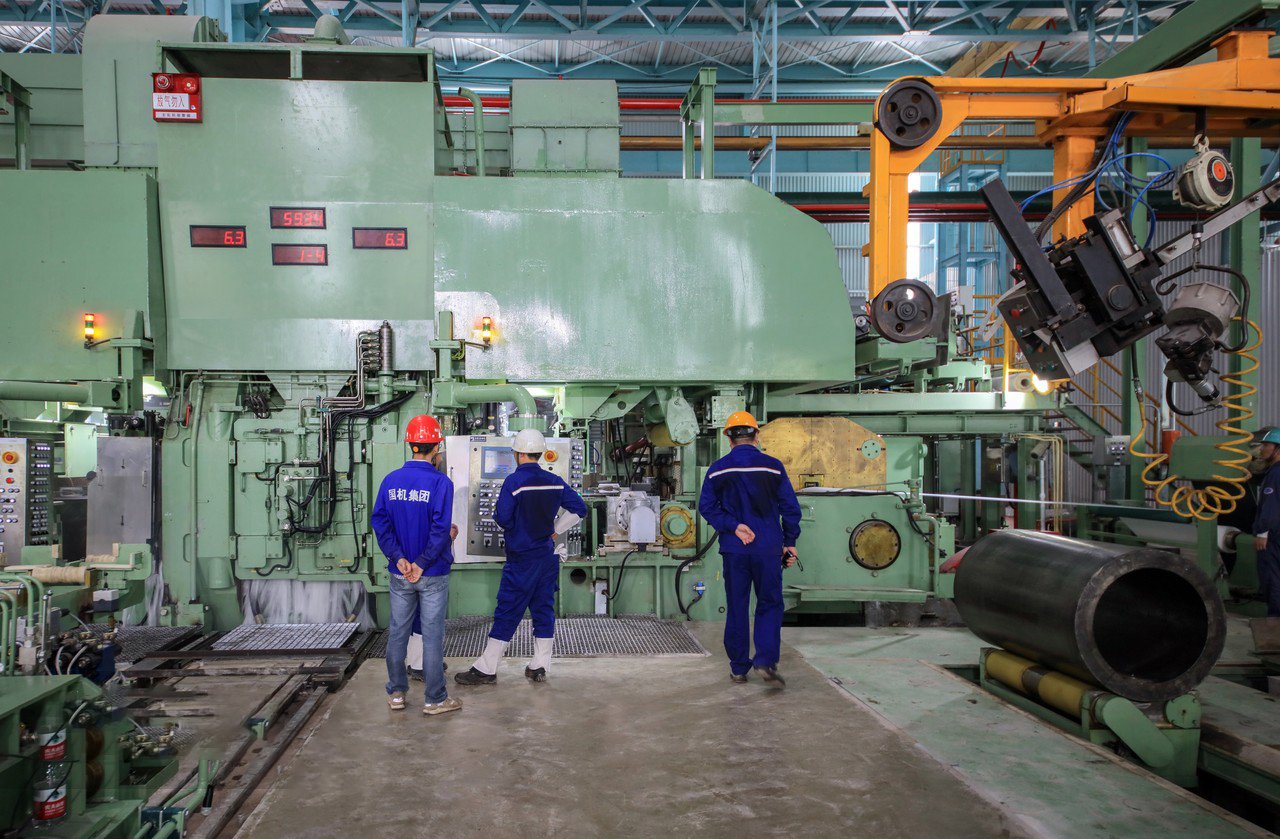
The Struggle to Marry Durability with High-End Design
In the world of architecture and interior design, few areas are as demanding as elevator interiors. These spaces must function as resilient workhorses while simultaneously projecting an image of sophistication and quality. This duality is the source of a major headache for designers. Traditional luxury materials often lack the fortitude for high-traffic environments. A beautiful wood panel, for instance, can be easily dented by luggage in a hotel or scratched by equipment in an office building. The cost of repairing or replacing such delicate surfaces quickly adds up, turning a beautiful design into a maintenance liability.
I recall a consultation with a developer for a new luxury hotel in Dubai. They were adamant about creating an opulent guest experience from the moment of arrival, and the elevators were a key part of that vision. Their initial design specified imported Italian marble panels. While stunning, we had to have a frank discussion about the practicalities. The constant flow of guests, luggage carts, and housekeeping trolleys would inevitably lead to chipping and staining. The cost and disruption of frequent maintenance would be substantial. This is a classic example of the durability-versus-design conflict. The goal isn't just to look good on day one, but to maintain that pristine appearance for years to come.
This is precisely where the conversation shifts toward advanced materials. The challenge pushes us to seek out surfaces that offer the best of both worlds. A material needs to have the visual depth, texture, and appeal of a luxury finish while possessing the inherent strength of an industrial product. This is why our work at MFY focuses so heavily on finishes like PVD and etching on a stainless steel base. We provide a canvas that already has the strength, and then we apply the artistry, creating a product that solves this core industry challenge without compromise.
Achieving Brand and Architectural Cohesion
An elevator is not an isolated capsule; it is a vital, moving extension of a building's architecture and brand identity. The journey from the lobby to the destination floor should be a seamless experience, reinforcing the design themes seen throughout the property. A major aesthetic challenge is ensuring the elevator's interior design doesn't clash with or detract from the building's carefully curated atmosphere. If the lobby is minimalist and modern with bronze accents, a standard, brushed stainless steel elevator can feel jarringly industrial and generic.
This challenge is magnified in large-scale projects like corporate headquarters or branded hotel chains, where consistency is key. I worked with a multinational tech firm on their new campus in Southeast Asia. Their brand guide was incredibly specific, right down to the precise shade of deep blue and the brushed metallic textures used in their product design. They wanted their elevators to echo this high-tech, premium branding. Using off-the-shelf materials was not an option. It would have broken the immersive brand environment they were spending millions to create.
The solution required a deep level of customization. We collaborated with their design team to develop a custom PVD blue finish on a hairline-brushed stainless steel sheet. The result was an elevator interior that felt like a natural extension of their brand—sleek, modern, and unique. This level of cohesion is difficult to achieve with traditional materials like plastic laminate or paint, which offer limited palettes and can't replicate the sophisticated texture of finished metal. Decorative stainless steel provides the flexibility to match brand colors, incorporate logos through etching, and create a truly bespoke environment.
Navigating Budget Constraints and Regulatory Compliance
While aesthetic vision is paramount, it must always exist within the practical frameworks of budget and safety regulations. This is the final, and often most difficult, challenge for designers. The most beautiful and durable material in the world is useless if it's financially unfeasible or fails to meet safety codes. Designers must perform a delicate balancing act, finding materials that are cost-effective over their entire lifecycle, not just at the point of purchase.
Traditional materials can be deceptive in this regard. A plastic laminate panel may have a lower initial cost, but if it needs to be replaced every five to seven years due to delamination or damage, its total cost of ownership skyrockets. In contrast, decorative stainless steel, while having a higher upfront investment, offers a much longer lifespan with minimal maintenance, making it more economical in the long run. I often walk clients through this analysis, demonstrating how the durability of stainless steel translates into direct, long-term savings.
Furthermore, all elevator materials must strictly adhere to fire safety standards, such as the ASTM E84 test1 for flame spread and smoke density, as well as accessibility and durability codes. Stainless steel is inherently non-combustible, giving it a significant advantage. The challenge lies in ensuring that any decorative finishes, such as PVD coatings or laminates applied to the steel, also meet these rigorous standards. At MFY, our integrated supply chain and stringent quality control ensure that all our decorative products are not only beautiful and durable but also fully compliant with international safety regulations, removing this burden from the designer and client.
| Feature | Standard Stainless Steel | Wood Veneer | Plastic Laminate | MFY Decorative Stainless Steel (PVD/Etched) |
|---|---|---|---|---|
| Initial Cost | Moderate | High | Low | High |
| Durability | High | Low | Low-Moderate | Very High |
| Maintenance | Low | High | Moderate | Very Low |
| Lifecycle (Years) | 30+ | 5-10 | 7-12 | 30+ |
| Aesthetic Options | Limited | Moderate | Moderate | Very High |
| Lifecycle Cost | Low | Very High | Moderate | Low-Moderate |
Stainless steel resists wearTrue
Decorative stainless steel sheets like Grade 304/316 offer exceptional durability against scratches and daily use while maintaining aesthetics.
Wood panels suit elevators bestFalse
Wood veneers are vulnerable to dents and moisture in high-traffic elevators, making them impractical despite their luxurious appearance.
How does mirror, etched, and PVD finishing enhance the look of stainless steel elevator panels?
Your elevator panels look bland and industrial, failing to impress visitors or align with your design vision. This generic appearance cheapens the user experience, making your property feel ordinary. You need a way to transform these surfaces into statements of luxury, artistry, and modernity.
Mirror finishes create an illusion of spaciousness and light, lending a classic, luxurious feel. Etched patterns introduce intricate, custom-designed textures and graphics. PVD-coated colors bronze, moving far beyond standard silver.
These three finishing techniques are the tools we use at MFY to turn a simple stainless steel sheet into a bespoke architectural element. They are not merely superficial coatings; they are transformative processes that fundamentally alter the steel's interaction with light, texture, and color. The true power lies in their combination. Imagine a bronze PVD mirror panel with a subtle, custom-etched geometric pattern. It's no longer just an elevator wall; it's a piece of functional art. This approach allows us to cater to any design language, from the ultra-modern and minimalist to the ornate and classical. By leveraging these finishes, we empower architects and designers to break free from the constraints of conventional materials and create elevator experiences that are both visually stunning and built to last, reflecting the true quality of the space.
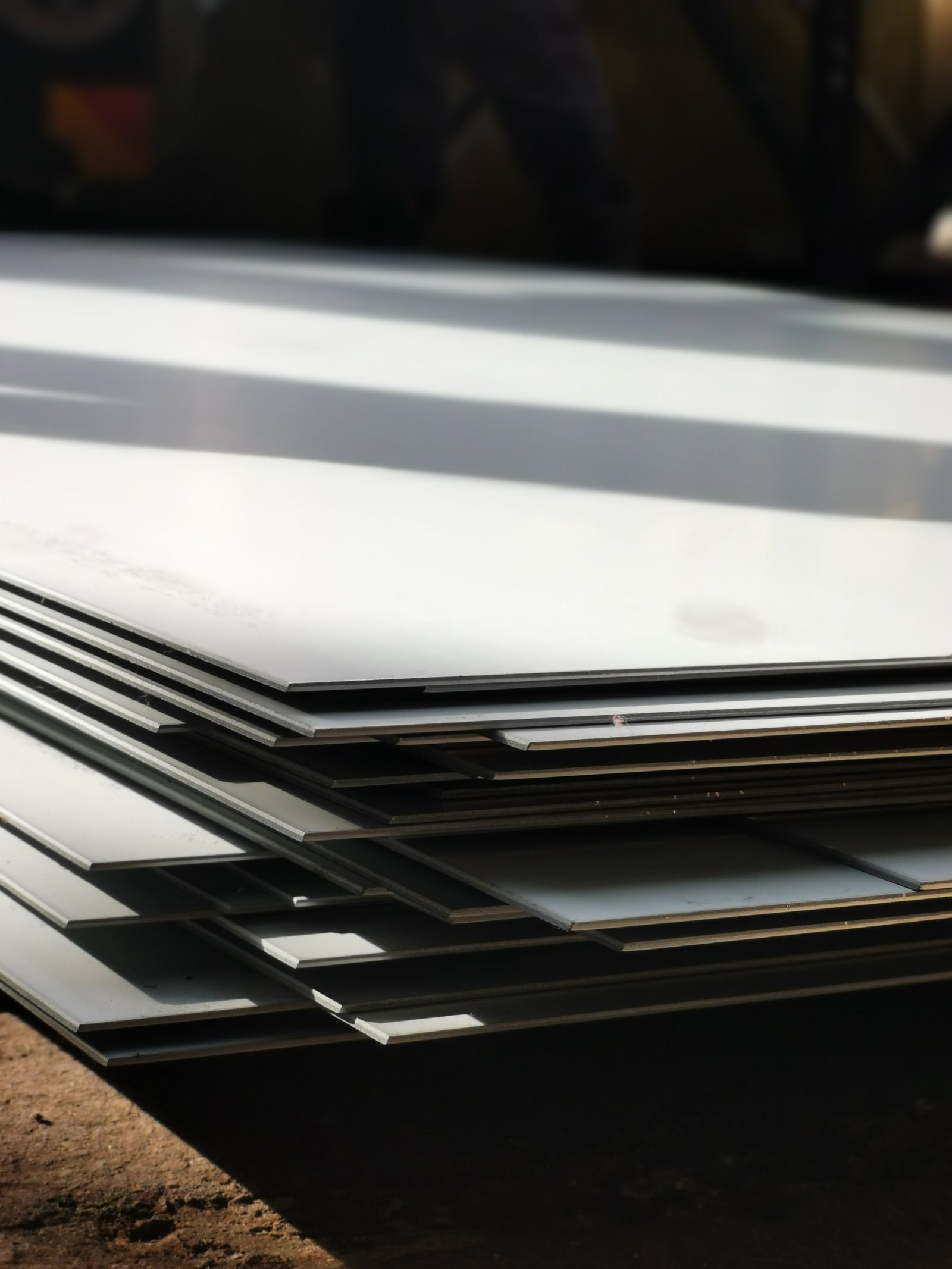
The Reflective Allure and Psychology of Mirror Finishes
The use of mirror finishes on stainless steel elevator panels2 is one of an architect's most powerful tools for manipulating the perception of space. Elevators are inherently small, enclosed environments. A super mirror finish, like a #8 or higher, creates an almost perfect reflection, effectively erasing the visual boundaries of the car. This makes the space feel larger, more open, and less claustrophobic, which significantly enhances passenger comfort. The polished surface catches and reflects ambient light, making the interior brighter and more inviting without requiring additional fixtures.
Beyond spatial perception, mirror finishes carry strong psychological associations with luxury, cleanliness, and modernity. Think of the gleaming lobbies of five-star hotels, the interiors of high-end retailers, or the pristine environments of corporate headquarters. Polished surfaces are a staple of these premium spaces. When we worked with a client developing a high-end retail complex in Singapore, they chose mirror-polished stainless steel panels for their elevators. The decision was strategic: the reflections not only made the elevators feel more spacious but also reflected the vibrant displays of the surrounding stores, creating a dynamic and immersive shopping experience before the customer even reached their destination floor.
The quality of the mirror finish is paramount. A true super mirror finish is achieved through a meticulous, multi-step mechanical polishing process that flattens the steel surface to an incredible degree of smoothness. This process, which we have perfected at MFY through years of R&D, ensures a distortion-free reflection that mimics a glass mirror but with the superior strength and impact resistance of stainless steel. It’s an elegant solution that combines sophisticated aesthetics with the practical need for a durable, safe material in a public space.
The Artistic Depth and Customization of Etched Patterns
Etching transforms a stainless steel panel from a simple surface into a canvas for artistic expression. This process uses a controlled method, typically acid or laser etching, to selectively remove a thin layer of the steel's surface, creating a pattern with a contrasting texture and finish. The result can be anything from a subtle, repeating geometric design to a complex, large-scale mural. This capability allows for an unparalleled level of customization, enabling designers to infuse the elevator interior with unique character and narrative.
The applications are virtually limitless. For a cultural institution or museum, we can etch historical patterns or abstract art onto the panels, turning the elevator ride itself into part of the exhibit. I recall a project for a new national library where the design team wanted to incorporate excerpts of famous literary texts into the architecture. We helped them realize this vision by precisely etching a script-like pattern onto brushed stainless steel panels. The interplay between the smooth, un-etched steel and the textured, matte finish of the lettering created a subtle, tactile experience that was both visually engaging and deeply connected to the building's purpose.
Furthermore, etching can be combined with other finishes for even greater effect. An etched pattern on a mirror-polished panel creates a dynamic interplay of reflection and texture. When applied to a PVD-colored sheet, the etched areas reveal the underlying silver of the stainless steel, creating a striking two-tone effect. This layering of finishes provides designers with an incredibly rich palette to work with, allowing them to specify a surface that is truly unique to their project and moves far beyond the generic options offered by traditional materials.
The Vibrancy and Superior Durability of PVD Coating
Physical Vapor Deposition (PVD) coating is a game-changing technology for introducing color to stainless steel. Unlike painting or plating, which are surface-level applications prone to chipping, peeling, and fading, PVD is a molecular bonding process. It takes place in a high-vacuum chamber where a solid metal, such as titanium or zirconium, is vaporized. This vapor is then deposited onto the stainless steel sheet, forming a thin, ceramic-like film that is incredibly hard and chemically bonded to the substrate. The result is a vibrant, consistent color that is an integral part of the steel itself.
The primary advantage of PVD is its exceptional durability. The coating is highly resistant to abrasion, scratches, and corrosion, making it ideal for high-traffic elevator interiors. It also offers excellent UV resistance, ensuring that colors like gold, bronze, rose gold, and black will not fade over time, even with exposure to sunlight. I often share the story of a client who manages a busy transit hub in the Middle East. They replaced their painted elevator doors with our PVD black stainless steel sheets. Years later, despite thousands of daily users, the doors show virtually no signs of wear, a testament to the coating's resilience.
From a design perspective, PVD opens up a whole new world of possibilities. It allows stainless steel to break free from its silver-toned constraints and align with any color scheme. A champagne gold finish can create a warm, inviting atmosphere in a hospitality setting, while a graphite black finish can deliver a sleek, ultra-modern look for a corporate office. At MFY, our advanced PVD lines allow for precise color matching and consistency across large orders, ensuring that every panel in a multi-elevator project is identical. This combination of aesthetic versatility and industrial-grade toughness is what makes PVD-coated stainless steel an innovative and superior solution.
Mirror finishes create spacious illusionsTrue
High-quality mirror finishes reflect light and surroundings, making small elevator interiors appear larger and more open.
PVD coatings are like paintFalse
PVD is a molecular bonding process that creates a ceramic-like film, unlike surface-level paint applications.
What are the underlying issues with traditional elevator panel materials?
You're considering traditional materials like wood, paint, or plastic laminate for your elevator project. However, you're overlooking their inherent flaws, which can lead to rapid deterioration, a dated appearance, and escalating maintenance budgets that will become a constant operational headache.
Traditional elevator panel materials like wood veneers, plastic laminates, and painted metal are plagued by poor durability. They are highly susceptible to scratches, dents, moisture damage, and delamination, leading to frequent, costly repairs and a degraded aesthetic over their short lifespan.
This is a recurring theme in my conversations with facility managers and contractors who are tired of the constant cycle of repair and replacement. A client from a large commercial real estate firm in Russia once told me, "We installed beautiful laminate panels in one of our new office towers, and within six months, the corners were peeling and the surface was covered in scuffs from daily traffic. It made our brand-new building look worn out." This experience is not unique. It highlights a fundamental mismatch between the material and the application. The transition to a more robust solution like decorative stainless steel3 isn't just about achieving a better look; it's about making a smarter, long-term investment that protects the building's value and image.
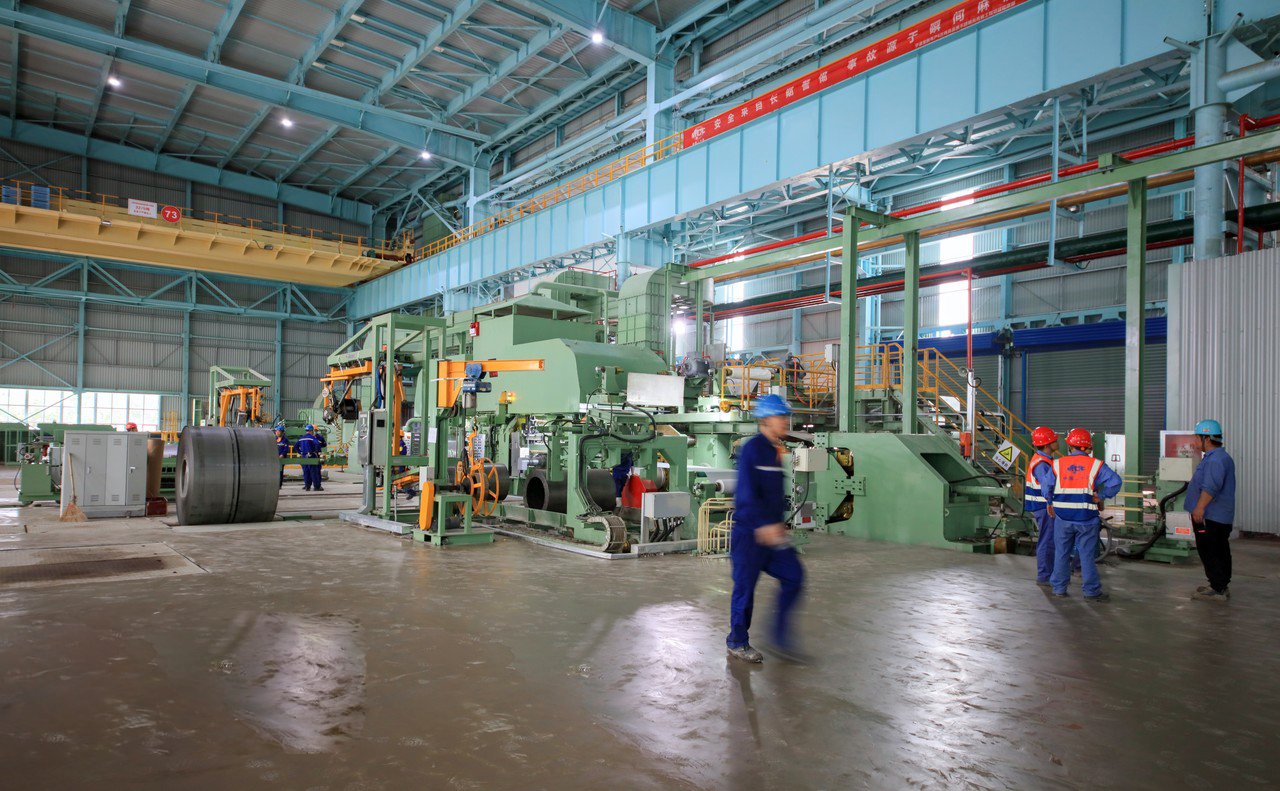
The Durability Deficit: Wear, Tear, and Vandalism
The primary failure of traditional elevator panel materials is their inability to withstand the rigors of their environment. Elevators are not gentle spaces; they are subjected to a constant barrage of impacts, abrasions, and potential vandalism. Plastic laminates4, while offering a low initial cost, are notoriously fragile. The edges and corners are prone to chipping and peeling, especially when struck by carts, strollers, or luggage. Once the surface layer is breached, the entire panel's integrity is compromised, leading to an unsightly appearance that is difficult to repair seamlessly.
Wood veneers, while offering a natural and warm aesthetic, are even more delicate. They are soft and can be easily scratched, dented, or gouged. In a commercial setting, a single careless move with a piece of equipment can leave permanent damage. Furthermore, wood is susceptible to moisture, which can cause it to warp, swell, or stain—a significant risk in environments with frequent cleaning or in humid climates, a common challenge for our clients in Southeast Asia. Painted metal surfaces fare little better, as they are easily scuffed and scratched, revealing the primer or raw metal beneath and requiring frequent touch-ups that never quite match the original factory finish.
This "durability deficit" is not just an aesthetic issue; it's a financial one. The constant need for repairs and eventual replacement creates a cycle of expenditure that building owners often underestimate. In contrast, the base material of our decorative panels—Grade 304 or 316 stainless steel5—is exceptionally hard and resistant to impact. The advanced finishes we apply, like PVD, add a further layer of hardened protection. This inherent toughness means our panels can absorb the daily abuse of a high-traffic environment while maintaining their original appearance for years, not months.
The Maintenance Nightmare and Escalating Lifecycle Costs
Beyond their vulnerability to damage, traditional materials create significant maintenance challenges. Cleaning and upkeep are far more complex and time-consuming than for stainless steel. Wood panels require specialized polishes and cleaners to avoid damaging the finish, and they can absorb oils and stains, making them difficult to sanitize effectively—a major concern in hospitality and healthcare settings. Plastic laminates can be stained by inks or harsh chemicals, and their textured surfaces can trap dirt, requiring intensive scrubbing that can further degrade the material over time.
This leads to a discussion of Total Cost of Ownership (TCO), a concept I always emphasize with my clients. A low upfront cost can be incredibly misleading if the material requires expensive, frequent maintenance and has a short lifespan. We analyzed the lifecycle costs for a typical commercial elevator over a 20-year period. While laminate panels were cheapest to install, they required replacement at least twice in that timeframe, along with significant labor costs for ongoing repairs. Wood veneer was even more expensive due to its high initial cost and specialized maintenance needs.
Decorative stainless steel, despite its higher initial investment, proved to be the most cost-effective solution over the long term. Its maintenance is simple: a wipe-down with a microfiber cloth and a mild, pH-neutral cleaner is usually all that's required. It doesn't require specialized chemicals and doesn't need to be replaced due to wear and tear. This dramatic reduction in maintenance labor and replacement costs results in a significantly lower TCO, providing a clear financial argument that resonates with savvy building owners and facility managers.
| Cost Factor | Plastic Laminate | Wood Veneer | MFY Decorative Stainless Steel |
|---|---|---|---|
| Initial Material Cost (per elevator) | $2,000 | $5,000 | $7,000 |
| Annual Maintenance Labor/Materials | $300 | $500 | $100 |
| Required Replacements over 20 Yrs | 2 | 1-2 | 0 |
| Cost of Replacements (incl. labor) | $6,000 | $12,000 | $0 |
| Total 20-Year Cost of Ownership | $14,000 | $27,000 | $9,000 |
Critical Limitations in Design and Modern Aesthetics
Traditional materials are increasingly falling short of contemporary design expectations. Modern architecture favors clean lines, authentic materials, and a sophisticated, minimalist aesthetic. Plastic laminates, particularly those with faux wood grain or stone patterns, can often look artificial and dated, failing to convey the sense of quality and permanence that designers strive for. Their design options, while varied, often lack the textural depth and interaction with light that you get from real, finished metal.
Painted surfaces, while offering a wide range of colors, result in a flat, one-dimensional finish. They lack the dynamic character of a brushed, mirrored, or PVD-coated stainless steel panel, which changes its appearance depending on the angle of light and the viewer's perspective. The trend in luxury design is moving away from imitation and toward authenticity. A client doesn't want something that looks like bronze; they want a material with the true visual properties of bronze, but with enhanced durability. PVD-coated stainless steel provides exactly that—the authentic color and sheen of metals like gold, bronze, or copper, combined with the superior performance of steel.
This is where MFY’s vision of innovation comes into play. We see stainless steel not just as a structural component but as a design medium. By pushing the boundaries of what is possible with finishes, we provide architects with the tools they need to stay ahead of design trends. We enable them to create spaces that feel modern, timeless, and, most importantly, authentic. This commitment to aesthetic excellence, backed by industrial strength, is what fundamentally separates decorative stainless steel from its traditional, and increasingly obsolete, counterparts.
Stainless steel has lower TCOTrue
The table shows stainless steel's 20-year cost is $9,000 vs $14,000-$27,000 for traditional materials due to zero replacements and minimal maintenance.
Wood resists humidity wellFalse
The text specifically mentions wood veneers warp and stain in humid climates, making them problematic in Southeast Asia.
What innovative solutions do these decorative finishes offer?
You're searching for an elevator panel solution that is both visually striking and practically indestructible. It feels like an impossible choice between artistry and functionality, forcing you to compromise on one to achieve the other. This compromise ultimately weakens your design and your building's long-term value.
Decorative stainless steel finishes offer innovative solutions by seamlessly merging extreme durability with nearly limitless aesthetic freedom. They enable bespoke designs, anti-fingerprint surfaces, and dynamic light integration, directly solving the core challenges of modern elevator design while ensuring longevity and minimal maintenance.
This synergy of form and function is at the heart of MFY's philosophy. We don't see ourselves as just a steel supplier; we are a solutions partner for the architectural community. Let’s move beyond the basics and explore the truly innovative applications these finishes unlock. We're talking about more than just a pretty surface. We are talking about creating interactive, intelligent, and resilient environments that fundamentally enhance the user experience, solve real-world operational problems for building owners, and set a new standard for what an elevator interior can be. This is where material science6 becomes an art form.
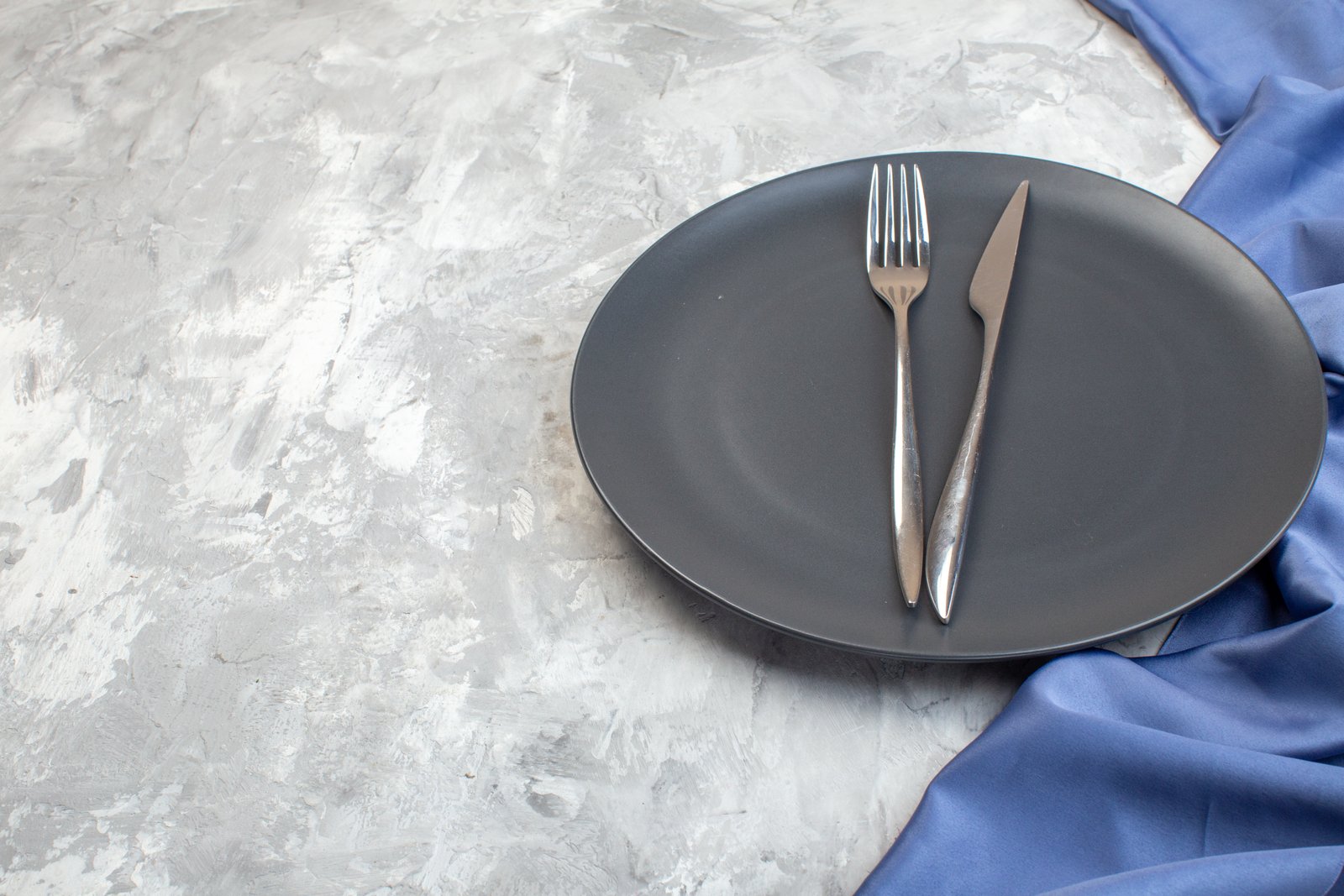
Integrating Light and Reflection for Dynamic Ambiance
One of the most exciting innovations is the interplay between decorative stainless steel and modern lighting technology. Elevator interiors can be transformed from static boxes into dynamic, responsive environments. Mirror-finished panels, particularly in bronze or champagne gold PVD tones, can be paired with concealed, indirect LED lighting. The light washes over the polished surfaces, creating a warm, sophisticated glow that enhances the feeling of luxury and comfort. The reflective quality of the steel multiplies the effect of the lighting, creating a bright, welcoming space with minimal energy consumption.
The potential deepens with etched panels. By back-lighting an etched stainless steel sheet, the pattern itself becomes illuminated. Imagine an elevator where a custom, laser-etched design of a forest canopy is lit from behind, creating a stunning silhouette effect that provides both ambient light and a powerful visual feature. I worked on a project for a high-end residential tower where we implemented this exact concept. The back-lit panels turned the elevator ride into a serene, art-like experience, becoming a signature feature of the building that residents were proud to show their guests.
This integration goes beyond simple aesthetics; it enhances safety and usability. Well-lit interiors improve visibility and create a greater sense of security for passengers. The lighting can even be made responsive, changing color or intensity based on the time of day or the floor the elevator is approaching. This fusion of material and light allows designers to craft a multi-sensory journey, making the brief moments spent in an elevator more pleasant, engaging, and memorable.
The Practical Innovation of Anti-Fingerprint Surfaces
For all their beauty, highly polished and dark-colored surfaces have historically had one major drawback: fingerprints. In a high-traffic area, maintaining a pristine, smudge-free appearance can be a constant battle for cleaning crews. This is where one of the most practical innovations in decorative stainless steel comes into play: anti-fingerprint AFP technology7. AFP is a transparent coating, often with a nanostructure, that is applied over the stainless steel finish. It creates a hydrophobic and oleophobic surface that resists the adhesion of oils and moisture from fingertips.
The impact of this technology is immense, especially in the hospitality, commercial, and healthcare sectors where cleanliness and appearance are paramount. Consider a black mirror PVD finish in a hotel lobby elevator. Without AFP, it would be a maintenance nightmare. With a high-quality AFP coating, smudges are drastically reduced, and any that do appear can be wiped away effortlessly with a dry microfiber cloth. This dramatically cuts down on cleaning time and the use of chemical cleaners, leading to significant operational savings and a more sustainable maintenance routine.
At MFY, we have invested heavily in our R&D to perfect our AFP coatings, ensuring they are not only effective but also durable enough to withstand commercial cleaning cycles without degrading. When we provided AFP-coated, etched panels for a new hospital wing, the facility manager was thrilled. The panels maintained their clean, professional look with minimal effort, contributing to the hygienic environment and reducing the workload on his staff. This is a perfect example of an innovation that solves a real, tangible problem for the end-user.
Customization at Scale: Weaving Brand Identity into Architecture
The ultimate innovative solution offered by decorative stainless steel is the ability to achieve deep customization at scale. This technology empowers companies to weave their brand identity directly into the fabric of their buildings in a way that is both permanent and sophisticated. Thanks to the precision of modern etching and the color consistency of PVD, it's possible to replicate complex logos, specific brand patterns, or unique artistic motifs across dozens or even hundreds of elevator panels with perfect fidelity.
This capability is made possible by a fully integrated supply chain like ours at MFY. We can take a client's design concept, process the raw stainless steel coils, apply the custom PVD color, perform precision etching, and cut the panels to the exact specifications needed for the project. I recall a partnership with a global hotel chain that was undergoing a major brand refresh. They wanted a signature geometric pattern to be a recurring motif in all their new and renovated properties worldwide. We worked with them to translate this pattern into an etched design on a custom rose gold PVD finish.
Because we control the entire production process, we were able to ensure absolute consistency, from their flagship hotel in New York to a new resort in Bali. This meant their brand was expressed identically across continents, reinforcing their identity and creating a cohesive guest experience. This level of scalable customization is simply not possible with traditional materials like wood or stone. It allows a building to move beyond generic finishes and to feature bespoke architectural elements that tell a story and build a powerful brand narrative.
Stainless steel integrates lightingTrue
Decorative stainless steel panels can be combined with LED lighting to create dynamic, energy-efficient ambient effects through reflection and backlighting.
AFP coatings require chemicalsFalse
Anti-fingerprint coatings actually reduce the need for chemical cleaners as smudges can be wiped away with just a dry microfiber cloth.
What are the maintenance strategies for decorative stainless steel panels?
You have invested in stunning decorative stainless steel panels for your elevators. Now, you're rightfully concerned about protecting that investment and ensuring they continue to look flawless. The fear of scratches, smudges, or using the wrong cleaner can cause unnecessary anxiety.
To maintain decorative stainless steel panels, routinely use a soft microfiber cloth with a pH-neutral cleaner or mild soap and water. Always wipe gently in the direction of the finish's grain. Crucially, avoid all abrasive powders, bleach-based chemicals, and steel wool pads.
The enduring beauty of high-quality decorative stainless steel is matched by its simplicity of care. Unlike temperamental materials that demand constant, specialized attention, stainless steel is inherently resilient. From our extensive experience at MFY, supporting clients from the humid climates of India to the bustling urban centers of Russia, we have distilled maintenance down to a few core best practices. These straightforward strategies are designed to protect your investment efficiently, ensuring the surfaces retain their luster for decades. It’s not about adding another complex task to your facility management; it’s about applying the correct, simple techniques to preserve the prestige and integrity of your architectural design.
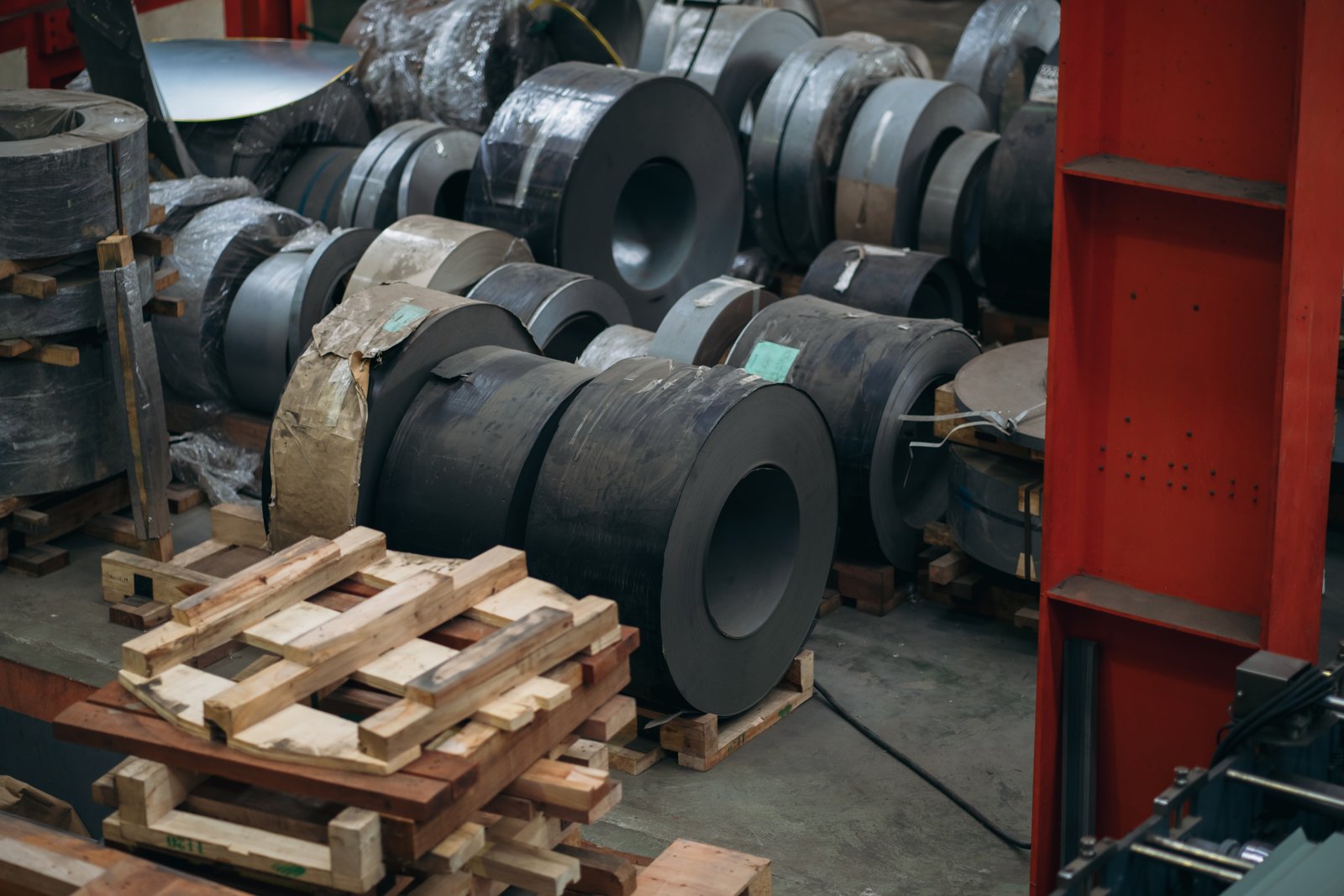
Routine Cleaning Protocols for Different Finishes
Effective long-term maintenance begins with a consistent and correct routine cleaning protocol. The key is to use the right tools and cleaners for the specific finish. For all types of decorative stainless steel, a soft, non-abrasive microfiber cloth is your most important tool, as it cleans effectively without leaving lint or causing micro-scratches. It's also critical to always wipe in the direction of the steel's grain or polish lines. Wiping against the grain can mar the finish over time.
For mirror-finished panels, the goal is a streak-free shine. The best approach is to use a standard, ammonia-free glass cleaner8. Lightly spray the cleaner onto the microfiber cloth, not directly onto the panel, to prevent dripping and ensure even application. For PVD-coated surfaces (both polished and brushed), a simple solution of mild dish soap and warm water is ideal. This gentle approach effectively removes daily grime without harming the robust PVD layer. After cleaning, it's important to rinse the surface with a clean, damp cloth and then dry it completely with another dry microfiber cloth to prevent water spots.
Etched surfaces require a slightly different technique to ensure the textured areas are cleaned thoroughly. While a microfiber cloth is still the primary tool, for any stubborn dirt lodged in the etched grooves, a soft nylon brush can be used. Gently brush in the direction of the pattern, using the same mild soap and water solution. Crucially, one must never use abrasive scouring pads, gritty cleaners, or chlorine bleach-based products on any type of decorative stainless steel, as they will cause permanent damage to the finish.
Addressing Scratches, Smudges, and Minor Damage
While high-quality stainless steel is exceptionally durable, minor cosmetic damage can still occur in very high-traffic areas. The strategy for addressing this damage depends heavily on the finish. For surfaces with an anti-fingerprint (AFP) coating, smudges and fingerprints are easily managed. In most cases, a dry microfiber cloth is all that is needed to wipe them away, restoring the pristine look instantly. This is one of the most significant maintenance advantages of AFP technology.
Addressing scratches is more complex. For a standard brushed or hairline finish, very light surface scratches can sometimes be blended using specialized, non-abrasive stainless steel polishing compounds9. This should only be attempted by trained personnel, as improper technique can worsen the appearance. However, for mirror-polished, PVD-coated, and etched surfaces, it is generally not possible to polish out scratches without damaging the surrounding finish. For these high-end finishes, prevention is the most effective strategy. This includes using protective films during the installation process and educating staff and tenants about being careful with sharp objects, carts, and luggage.
For our clients at MFY, we emphasize a proactive approach. During project handover, we provide detailed maintenance guidelines and often train the facility's cleaning staff on the proper techniques. This knowledge transfer is crucial for long-term preservation. A simple troubleshooting guide can be an invaluable tool for the maintenance team.
| Issue | Finish Type | Recommended Action | Avoid At All Costs |
|---|---|---|---|
| Fingerprints/Smudges | Mirror, PVD, AFP | Wipe with dry or damp microfiber cloth. Use glass cleaner for mirror. | Harsh chemicals, paper towels (can be abrasive). |
| Dust/Light Dirt | All Finishes | Wipe with soft cloth and mild soap/water. Wipe in grain direction. | Abrasive powders or scouring pads. |
| Stubborn Dirt | Etched Finish | Use a soft nylon brush with mild soap/water in the etched grooves. | Metal brushes, scraping tools. |
| Light Scratches | Brushed Finish Only | Test a specialized non-abrasive polish in an inconspicuous area. | Attempting to polish Mirror or PVD finishes. |
| Water Spots | All Finishes | Rinse with clean water and dry immediately with a microfiber cloth. | Letting cleaning solutions air-dry on the surface. |
Long-Term Preservation and Lifecycle Management
The foundation of long-term preservation is laid long before the first cleaning cloth touches the panel. It begins with selecting the right material from a reputable supplier. Opting for a higher grade of steel, like 316 for coastal or corrosive environments, and ensuring the PVD coating is of a sufficient thickness and quality are the most critical decisions. As a supplier with a globally integrated chain, we at MFY pride ourselves on the quality of our raw materials and the robustness of our finishing processes. This initial quality is the best guarantee of a long and trouble-free service life.
Lifecycle management also involves creating a culture of care within the building. This includes simple measures like ensuring service elevators are used for moving heavy equipment and furniture, and placing subtle reminders about luggage handling in hotel elevators. Educating the maintenance staff is not a one-time event; it should be part of regular training, especially when new personnel are brought on board. Providing them with the right tools—plenty of clean microfiber cloths, soft brushes, and approved pH-neutral cleaners—is a small investment that pays huge dividends in preservation.
Ultimately, the long-term strategy is rooted in the inherent properties of the material itself. Decorative stainless steel does not rot, peel, delaminate, or fade like its traditional counterparts. Its "maintenance" is more about routine cleaning than it is about constant repair. By choosing a high-quality product and implementing these simple, consistent cleaning protocols, a building owner can ensure that their elevator panels will look as stunning on their twentieth anniversary as they did on day one. This unparalleled longevity and low total cost of ownership is the ultimate value proposition.
[text-placehold]
Microfiber cloths prevent scratchesTrue
Soft microfiber cloths are non-abrasive and clean effectively without causing micro-scratches on stainless steel surfaces.
Bleach is safe for stainless steelFalse
Bleach-based chemicals should never be used on decorative stainless steel as they can cause permanent damage to the finish.
Conclusion
Ultimately, decorative stainless steel sheets finished with mirror, etched, and PVD color techniques are the superior choice for modern elevators. They conquer the aesthetic and durability challenges that plague traditional materials, offering a versatile, long-lasting, and cost-effective solution for any architectural vision.
-
Understand fire safety compliance for elevator panel materials ↩
-
Learn about the aesthetic and spatial benefits of mirror finishes ↩
-
Learn about durability, cost savings, and aesthetic benefits of stainless steel panels. ↩
-
Understand the inherent flaws of plastic laminates and how they affect longevity. ↩
-
Discover why 304 and 316 stainless steel resist impact and environmental challenges. ↩
-
Discover the fusion of technology and design in stainless steel applications. ↩
-
Understand how AFP reduces fingerprints and maintenance. ↩
-
Learn how ammonia-free glass cleaners prevent streaks on mirror finishes. ↩
-
Find instructions on safely using polishing compounds for minor scratches. ↩
Have Questions or Need More Information?
Get in touch with us for personalized assistance and expert advice.
